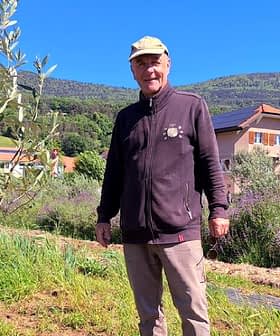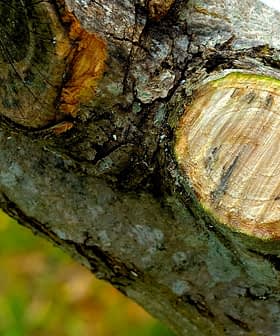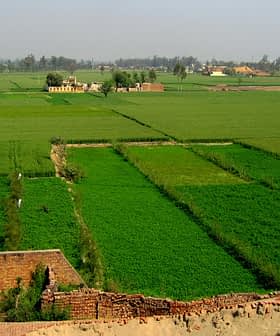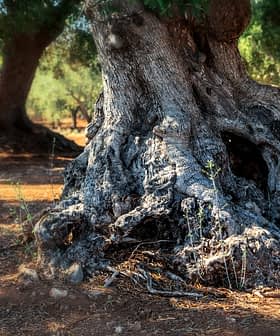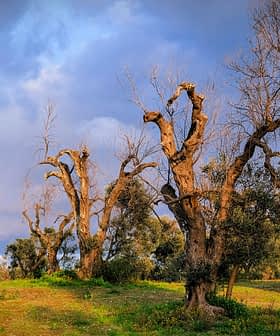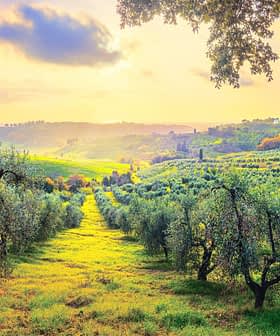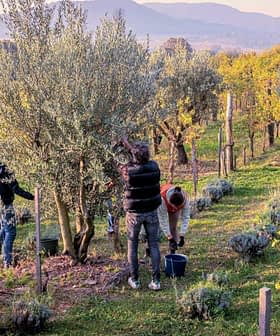Expert Says Eradication of New Olive Tree Disease in Europe Unlikely
Dr. Donato Boscia from the Institute of Plant Virology in Italy discusses the challenges of eradicating Xylella fastidiosa (Xf) in olive groves in Lecce, Italy, due to the pathogen’s multiple hosts and efficient insect vectors. A ban on plant movement has been implemented in the affected area, and research is focused on identifying sources of inoculum and containing the outbreak.
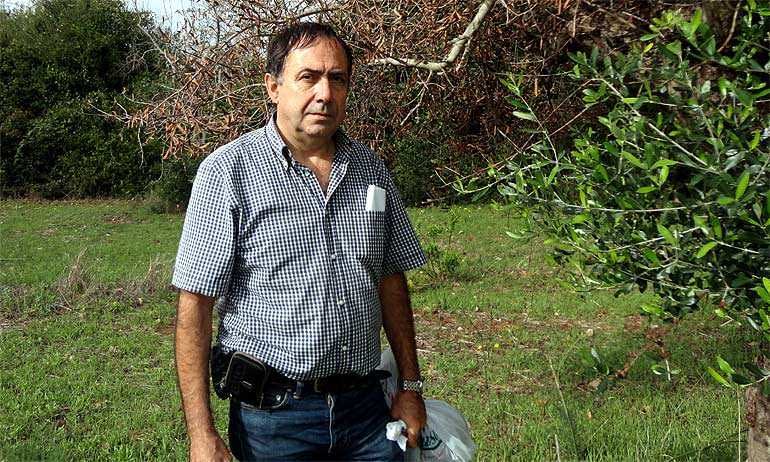
Will Italy be able to eradicate the disease which has already infected 8,000 ha of olive groves in Lecce, on the Salento peninsula? And what is the risk of the plant pathogen behind it – Xylella fastidiosa (Xf), also the culprit in Pierce’s disease – spreading to olive trees elsewhere in Italy and wider Europe?
Olive Oil Times put these and other questions to one of the leading experts on the outbreak, plant virologist Dr. Donato Boscia, from the Institute of Plant Virology (IVV) at the National Research Council, in Bari, Italy.
Boscia spoke in the wake of a European Union-wide ban on movement of certain plants out of Lecce to help prevent spread of the disease. EU member states must also start annual checks for the presence of Xf.
A major pest in the grapevine and citrus industries in tropical, subtropical and temperate areas of the Americas, until the Lecce outbreak in mid-October there had been no confirmed reports of Xf in Europe, though there was an unconfirmed report in vineyards in Kosovo in the 1990s.
What is the current extent of the Xf infection in Apulia?
Dr. Donato Boscia: A large regional survey, done by sampling and analyzing 16,000 plants, has been carried out in the Apulia region, in south-east Italy. It was confirmed that the pathogen is actually confined to the province of Lecce, while the remaining central and northern part of the region are free.
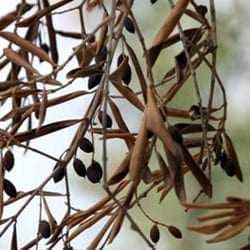
Is eradication possible?
I feel that even a severe and ambitious program of eradication will not have much chance of success because:
1. The contaminated area has a very large extension.
2. The pathogen has several susceptible hosts, and surely several of those are still unknown and may be symptomless.
3. Efficient insect vectors (carriers) are involved.
4. The area is densely populated, with an infinite number of private houses with gardens, which makes unrealistic to expect to get all of them sampled and eventually eradicated.
In my personal opinion these four elements make it very difficult, if not impossible, for an eradication program to succeed.
Is this strain of Xf likely to spread to olive or other trees in other parts of Italy and beyond?
That’s difficult to say. Due to the geographic position of the outbreak there is no risk of spread to other parts of Italy or Europe through insect vectors (carriers). However, though movement of susceptible plants is forbidden, any illegal or uncontrolled plant movement may represent a major risk.
What are the symptoms of Xf?
They consist of the withering and desiccation of terminal shoots distributed randomly but which then expand to the rest of the canopy, thus resulting in the collapse and death of the trees. In the affected groves, the totality of the plants are symptomatic.
What is currently happening in Apulia in relation to the outbreak?
So far there are two main actions being taken by the Regional Plant Protection authorities. First, in the contaminated area as well as in the whole province of Lecce, the movement of plant materials of susceptible species is prohibited. Second, a survey of the whole region aimed at identifying and delimiting the infested areas, the buffer zones and the security zones is due to be by April 1.
Until these areas have been delimited though a large scale survey, there is no possibility to start any effective program of the uprooting and removal of infected plants.
It has to be said that the outbreak was identified only five months ago, and that the relevant territory is very large – 8,000 ha of olive orchards distributed in a territory at least twice as large. Moreover, other minor spots came out during the monitoring. This work is almost completed and additional phytosanitary measures — such as tree removal — are under discussion and negotiation with the European Commission Directorate General for Health and Consumers.
What is the research now focused on?
Epidemiological studies underway follow four different routes:
1. Identification of natural sources of inoculum (natural flora). This is essential to plan further actions of containment, understand the real possibilities of success with an eradication program, better understand the risk of further spread, and define the list of species banned from trade.
2. Capture of leafhoppers thriving on the natural flora, their identification and analysis for the presence of Xf
3. Transmission trials using Xylella-positive insects
4. Placement of bait plants in infected olive groves.
The characterization of the genotype is well advanced, and results will be published soon.
What strain of Xf is the cause?
DNA analysis shows the population of X. fastidiosa affecting olive trees in Italy is an atypical variant of the subspecies “pauca”, the one known to cause Citrus Variegated Chlorosis in Brazil. Fortunately, our variant is unable to infect citrus or grapevine.
When might characterisation of the genotype be complete and how might that help?
The sequence of the whole genome is almost complete and will probably be published in a couple of months, though a genotype with the same sequence type has already been identified, giving the possibility of soon getting important elements to assess the pathway of entrance of the pathogen in Europe and important information on its biological properties.
What was the lead-up to the outbreak?
A devastating disease known as “quick decline syndrome of olive” (OQDS) appeared suddenly a few years ago in olive trees, many of them century-old trees, in the vicinity of Gallipoli, in the Lecce province. By late last year it had exploded in epidemic form, so as to affect the estimated surface area of over 8,000 hectares.
Samples from olive trees were subjected to molecular analysis which gave positive results for Xf. Almond (Prunus dulcis) and oleander (Nerium oleander) plants growing near affected olive trees and showing symptoms of leaf scorch also tested positive.
In the middle of last October, the Institute of Plant Virology of the National Research Council (CNR) and the University of Bari informed the local phytosanitary authorities of the detection of the Xf bacterium in Lecce and the movement of propagation material of any susceptible host species from the infected area was promptly prohibited by the Regional Plant Protection Service.
What is the purpose of the coming “First International Symposium on the European outbreak of Xylella fastidiosa in olive?”
The symposium will be held in Gallipoli from October 21 – 22 and be followed by technical laboratory workshops from October 23 – 24. It will offer a detailed overview of this emerging threat and provide a great opportunity to exchange information with the main international experts on this topic.


